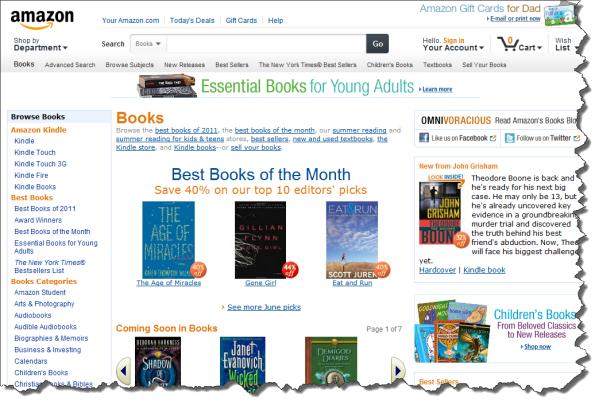Do you get annoyed by web pages that are cluttered and lack clarity? You land on the page and you are faced with all sorts of boxes, images, adverts and general untidiness. When you ask people what they think of such web pages they generally do claim to be frustrated and put off. Indeed, many people say they would simply leave such sites and go to another one which looks more professional. Part of the reason, apparently, is that visitors cannot work out what the page is about – the meaning gets hidden amongst all the clutter.
Or does it?
Take a look at Amazon. Some people say they do not like it because they view it as cluttered, untidy and not a web design award winner. Yet in the last quarter alone this website brought in almost $14bn. Not bad for a site some people say is “full of clutter”. The meaning of the site must get through in spite of the very busy pages it presents to us.

Often, website owners confuse meaning with clean design. That is not necessarily the same. Take the plethora of “pile it high, sell it cheap” retail stores. The items are not displayed well, they are often still in cardboard packing boxes rather than on shelves and there is a general aura of “cheapness”. That makes us feel as though we are getting a good deal. The “design” of the stores makes us think “bargain”. Yet some of the prices are higher than for similar items in “better designed” shops. For instance, I bought a single item in a “pound store” yesterday, paying £1 for it of course. Five minutes later I was in a major retailer with bright lights, beautifully designed displays and so on to discover the same £1 item available for 79p. The “pound store” had – by its design – lulled me into the cheapness frame of mind.
Similarly online, the design of Amazon helps you think “bargain” – the design encourages you to buy and the sometimes cluttered nature is part of that. In other words, we get a “meaning” from the design which is more subconscious. It can be a mistake, therefore, to think that clean design is the only way to get your meaning across.
This is highlighted in recent research in Taiwan which looked at whether or not the meaning of words came through when they were crowded out by clutter on the page. It transpired that the meaning was indeed identified by the readers even if they couldn’t actually spot the word. It is more evidence that clarity or clean design is not the only way to get your meaning across. You can easily demonstrate the meaning of a web page without people actually seeing it. Clutter might even help.
Related articles
- 3 Marketing Lessons From Amazon’s Web Strategy (hubspot.com)

